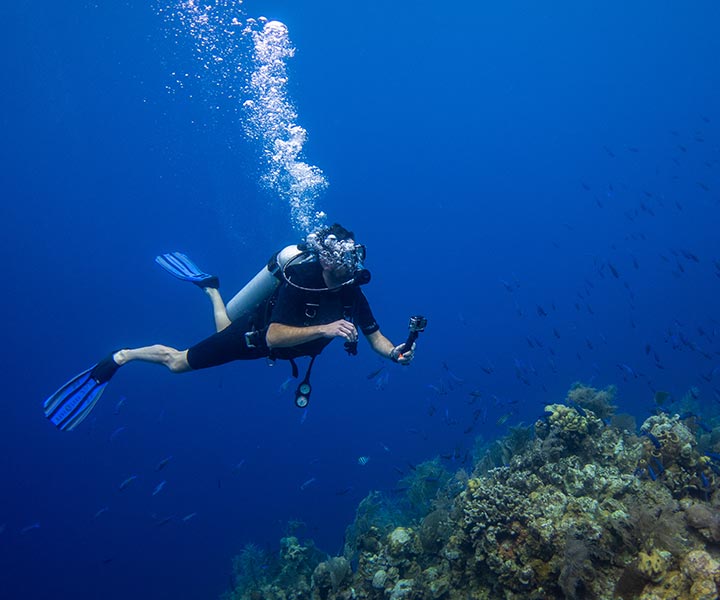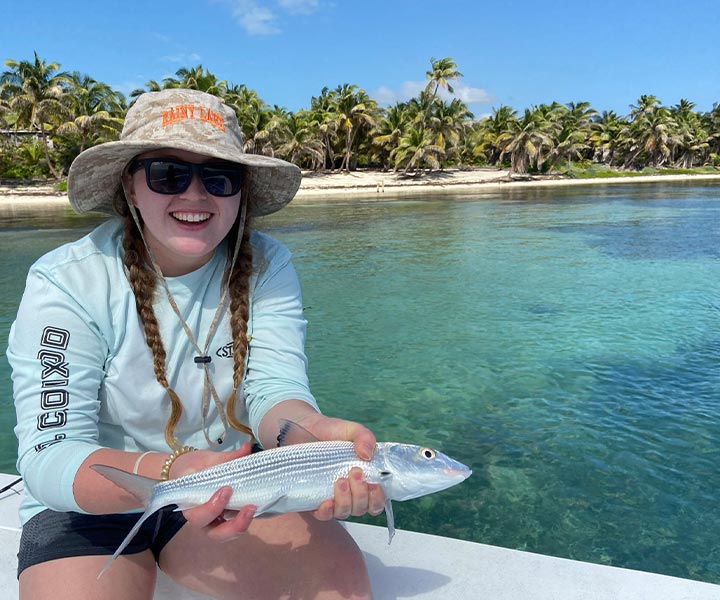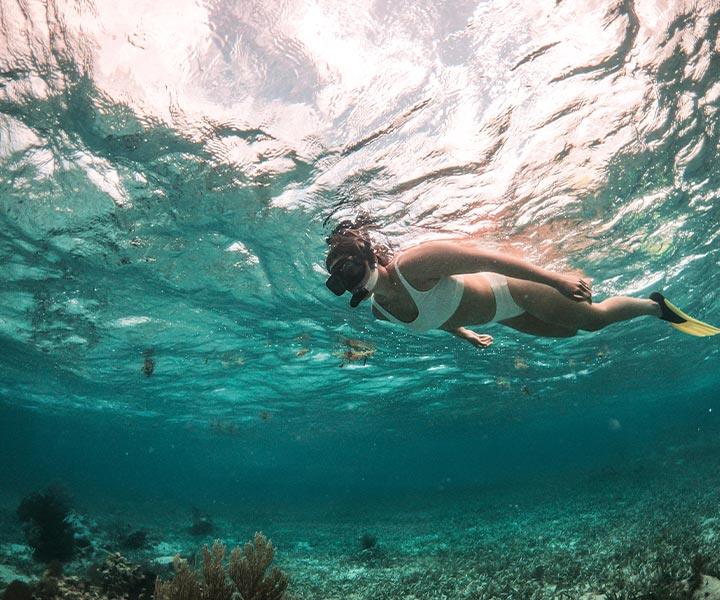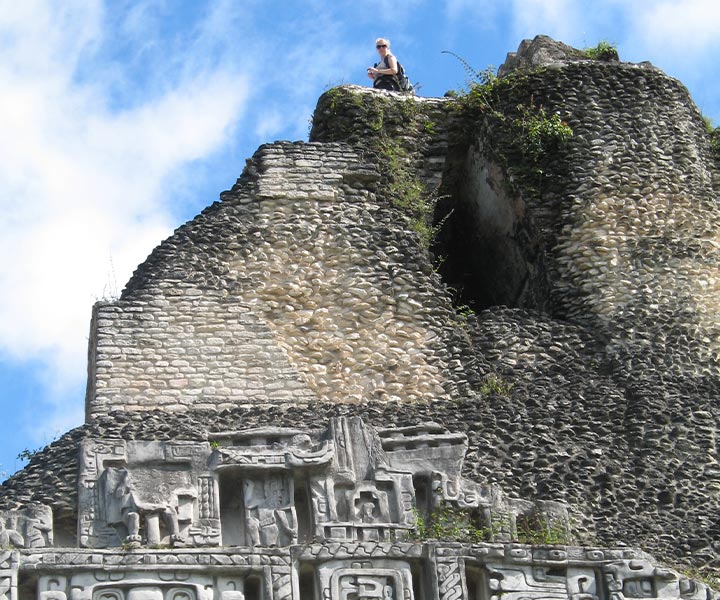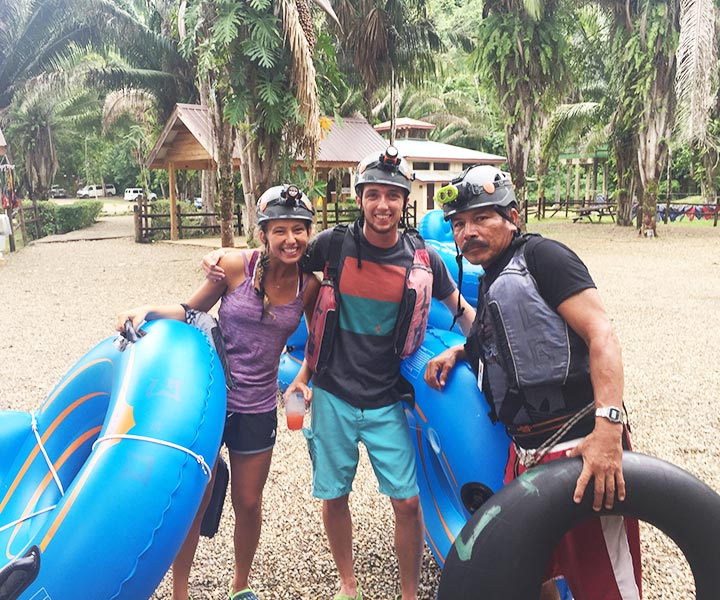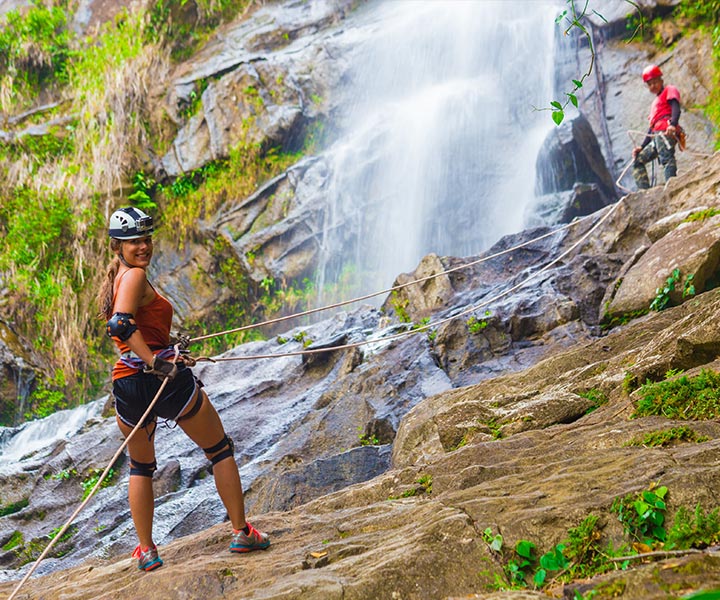TURNEFFE ATOLL DIVING
3 tank dive
Turneffe Atoll offers true world class diving — the visibility often ranges from 100 to 150 feet. The diving sites are considered some of the best in the Western Caribbean. Experience the magnificent wall of Rendezvous, which is abundant with colorful sponges, corals, and marine life. Profile is 80 feet for 40 minutes. Your second dive takes place along another great wall, where you will see barrel sponges, tube sponges, black coral, sea fans, and abundant marine life. Visibility is 100 plus. Profile is 70 feet for 40 minutes. Lunch is served and the third and final dive starts at about 25 to 60 feet and is covered with sponges, corals and marine life. Visibility is 100 feet plus. Profile is 60 feet for 40 minutes. This is a 1 hour trip to Turneffe and the return is approximately 1 hr 40 min after the last dive.
Includes: Round-trip transfers, guided tour by a knowledgeable divemaster, breakfast, lunch, refreshments, tanks, weights, and water.
THE BLUE HOLE & LIGHTHOUSE REEF
Diving or Snorkeling
Top off your dive vacation with 3 world class dives. Venture into the best deep dive there is and view stalactites, stalagmites and enjoy the view of the sharks as you plunge into the depths. An abundance of marine life such as queen angel, grouper, trigger fish and spotted moray can be seen at the top of the wall. With 100 plus foot visibility the profile for this dive is 130 ft. for 10 minutes actual and 25 minutes total dive time. The Blue Hole is also great for snorkeling. The walls are surrounded by fabulous pristine coral formation. Lots of color and crystal clear water and only 6 foot deep where the drop off begins. The second and third wall dives offers vibrant coral gardens, sponges, plunging wall, schooling fish, sea turtles, eagle rays and sharks on almost every dive. After our second dive/snorkel, lunch and stroll the beach to the bird sanctuary to see Boobies, Frigate birds and Iguanas.
Includes: Round-trip transfers, guided tour by a knowledgeable divemaster, breakfast, lunch, refreshments, tanks, weights, and water.
ABOUT THE BLUE HOLE
The Great Blue Hole is a large submarine sinkhole off the coast of Belize. It lies near the center of Lighthouse Reef, a small atoll 70 kilometers from the mainland and Belize City. The hole is circular in shape, over 300 meters across and 125 meters deep.
Besides modern-day marine life, this vertical cave contains remnants from its days above water. When much of Earth’s water was sequestered in glaciers, global sea level was lower. During this time, stalactites or “dripstones” formed inside this cave, and those rocks are preserved underwater today.
Jacques Cousteau revealed the secrets of the mysterious Blue Hole to millions of viewers in 1971 through the television series The Undersea World of Jaques-Yves Cousteau. Today, dive boats follow the way of the famous Calypso to explore one of the world’s best destinations for scuba diving.
Blue Hole Natural Monument is one the seven wonders of Belize’s World Heritage Site. The Belize Barrier Reef Reserve System, which covers a total area of 963 square kilometers, illustrates a classic example of reefs through fringing, barrier, and atoll types.
The coastal area of Belize is an outstanding natural system consisting of the largest barrier reef in the northern hemisphere, offshore atolls, several hundred sand cays, mangrove forests, coastal lagoons and estuaries. The system’s seven sites illustrate the evolutionary history of reef development and are a significant habitat for threatened species.
The reef extends from the border with Mexico to the north, to near the Guatemalan border to the south. The Belize submarine shelf and its barrier reef, represent the world second largest reef system and the largest reef complex in the Atlantic-Caribbean area. Outside the barrier, there are three large atolls: Turneffe Islands, Lighthouse Reef and Glover’s Reef.
Between the mainland and the barrier reef is an extensive offshore lagoon which increases in width and depth from north to south. In the north, water depth averages 2-3 m over a flat, featureless bottom 20-25 km wide. South of Belize City, the shelf gradually deepens forming a channel between the mainland and the outer platform, reaching a depth of 65 m in the Gulf of Honduras.
The approximately 450 sand and mangrove cays confined within the barrier and atolls range in size from small, ephemeral sand spits to larger, permanent islands capable of sustaining human settlements. The largest of these Islands is Ambergris Caye where the village of San Pedro is located. Several PADI dive operators visit Half Moon Caye Natural Monument out of San Pedro, Caye Caulker and Belize City.
The Great Blue Hole is a popular spot amongst recreational scuba divers, who are lured by the opportunity to dive in crystal-clear water and meet several species of fish, including giant groupers, nurse sharks and several types of reef sharks such as the Caribbean reef shark and the Blacktip shark. Other species of sharks, like the bull shark and hammerheads, have been reported there, but are not regular sightings. Usually, dive trips to the Great Blue Hole are full-day trips, which include one dive in the Blue Hole and two further dives in nearby reefs.

